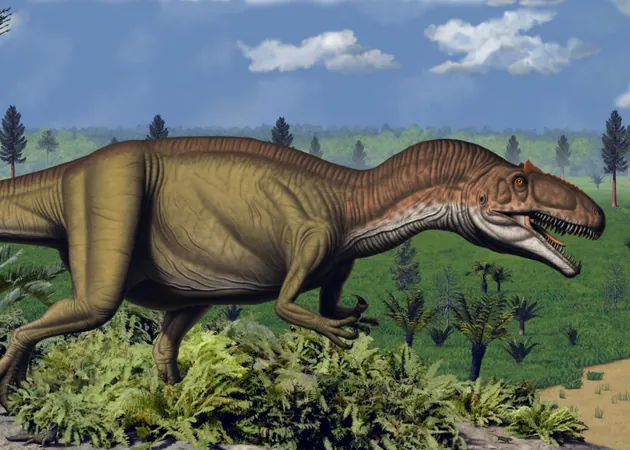
Unlocking the Secrets of Dinosaurs' Diets: A Breakthrough in Fossil Research!
2025-07-24
Author: Li
Imagine biting down on a meal that's been gone for 150 million years! It turns out, the truth in the saying "you are what you eat" resonates through time, as researchers unveil a stunning discovery about the diets of our distant dinosaur relatives.
At The University of Texas at Austin, scientists have dived deep into the chemistry of dinosaur tooth enamel, revealing tantalizing clues about their culinary preferences. The analysis shows that different dinosaur species had distinct tastes, favoring various parts of plants.
This remarkable study, led by the insightful Liam Norris, highlights the intricacies of dinosaur diets, showing that the cohabitation of gigantic herbivores wasn't just a matter of size, but of selective feeding strategies. "It's a puzzle we've long tried to solve," Norris explains, referring to the mysteries surrounding the coexistence of these colossal herbivores.
Published in the journal Palaeogeography, Palaeoclimatology, Palaeoecology, this groundbreaking research focused on teeth from four dinosaur species, including the long-necked Camarasaurus and the massive Diplodocus, as well as carnivorous players like the Allosaurus.
Norris analyzed teeth from 17 ancient creatures found in the rich deposits of the Carnegie Quarry in northeastern Utah, where these fossils were astoundingly preserved during a severe drought.
Norris's keen eye discovered fascinating dietary preferences. The Camptosaurus had a refined palate, opting for tender leaves and buds, while the Camarasaurus favored crunchy, woody tissues from conifers. Meanwhile, the Diplodocus enjoyed a mixed buffet of ferns and tougher vegetation.
This research reshapes our understanding of how these prehistoric giants thrived together, as the diversification of their diets suggests a lush and productive ancient ecosystem. This evidence challenges previous notions that separation in diet was just about tree height.
Furthermore, the findings ignite intriguing discussions about the anatomy of long-necked dinosaurs, implying they could reach for various plants without moving much—a true advantage in their quest for food.
On the other side of the food chain, the carnivores, Allosaurus and Eutretauranosuchus, shared some dietary overlaps, hinting at competition but also diverse prey choices, with the Eutretauranosuchus perhaps favoring fish.
Ultimately, Norris's work paints a vivid picture of an ancient world filled with remarkable diversity—an ecosystem that not only supported these colossal beasts but thrived with a rich tapestry of vegetation.
As Norris aptly puts it, this research reaffirms that the ancient ecosystem was as spectacular as we've always imagined it to be!



 Brasil (PT)
Brasil (PT)
 Canada (EN)
Canada (EN)
 Chile (ES)
Chile (ES)
 Česko (CS)
Česko (CS)
 대한민국 (KO)
대한민국 (KO)
 España (ES)
España (ES)
 France (FR)
France (FR)
 Hong Kong (EN)
Hong Kong (EN)
 Italia (IT)
Italia (IT)
 日本 (JA)
日本 (JA)
 Magyarország (HU)
Magyarország (HU)
 Norge (NO)
Norge (NO)
 Polska (PL)
Polska (PL)
 Schweiz (DE)
Schweiz (DE)
 Singapore (EN)
Singapore (EN)
 Sverige (SV)
Sverige (SV)
 Suomi (FI)
Suomi (FI)
 Türkiye (TR)
Türkiye (TR)
 الإمارات العربية المتحدة (AR)
الإمارات العربية المتحدة (AR)